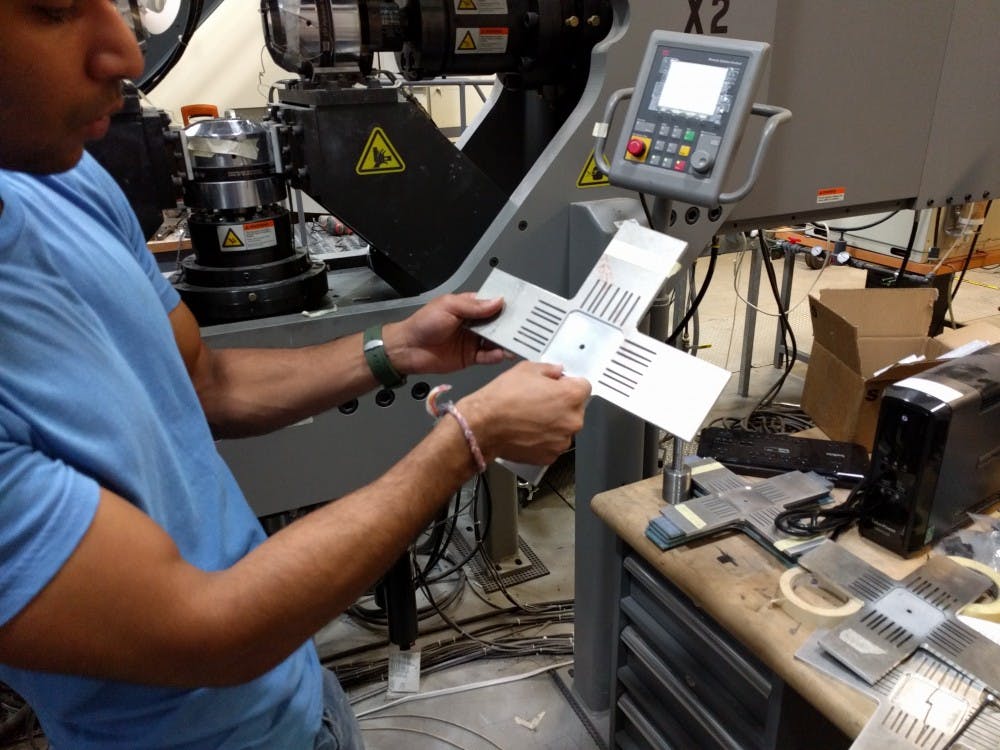Past the oscillating shadows of its large fans and the polarizing yellow-and-black-striped paint job, the ISTB2 building shelters one of ASU's most expensive pieces of equipment.
It is a planar biaxial test system, the only one of its kind in the U.S., purchased by the University from Mechanical Test Systems for around one million dollars.
ASU bought the system a decade ago, and since then its been used almost entirely by a single division within the university: the Adaptive Intelligent Materials and Systems Center, otherwise known as AIMS.
Siddhant Datta, a material science doctoral student, works with the center as well as runs and maintains the planar biaxial, which he's been doing for the last several years.
"You need training, you need to be used to it," Datta said.
He is the only student at ASU who operates the test system alone. The machine itself is truly a sight, a hulking structure of thick, anodized metal shrouded in wires and switches.
The biaxial has two sets of arms, one on the horizontal axis and one on the vertical axis. With these arms, the biaxial applies tension and torque to metal samples shaped like small crosses in order to better understand their durability and applications.
"This is what we're using for the Navy," Datta said, holding up a small cross of aluminum alloy. Most of AIMS funding comes from the military in exchange for testing various materials, but regardless of the donor, the purpose is always the same: aerospace.
AIMS is headed by ASU engineering professor Aditi Chattopadhyay.
The aerospace focus is her doing, she said. It is her main research priority, and her interest has spilled over into the mission of AIMS and the work of students who maintain the lab.
"This specimen is a metal hybrid composite, so it has metals and glass fiber," Datta said, holding up a thin, translucent blue cross that AIMS is testing for one of Airbus's suppliers, Alcoa.
The composite will alter how glare interacts with the materials of the plane.
"We're testing this newer glare material," Joel Johnston, a postdoc in the lab working on the Alcoa project, said. "The issue with that is they're moving more towards this material just because of the beneficial properties, but there's a lot less that's known about this hybrid material."
Companies who want to definitively discover the limits and abilities of the materials they employ have a lot of motivation to go through ASU, the sole owner of a planar biaxial system of this scale in the country.
This means that the hull of a commercial aircraft is likely using materials tested in ASU's biaxial system.
In fact, almost all of AIMS' collaborators leave contrails in the sky one way or another.
One of Datta's fellow Ph.D students in the lab, Chris Sorini, said that he was working on a project testing composites for NASA.
"In aircrafts you have this complex loading happening all the time, it's not along just one axis, its along many axes; it's a component attached to many other components," Datta said, resting a hand on the machine. "This simulates that pretty well."
Reach the reporter at sdeadric@asu.edu or follow @deadrick_sam on Twitter.
Like The State Press on Facebook and follow @statepress on Twitter.




